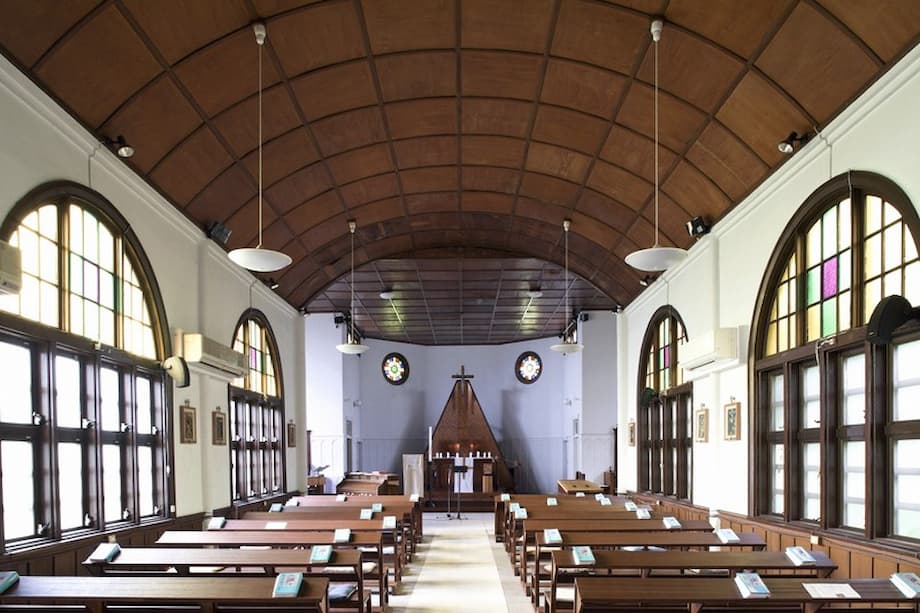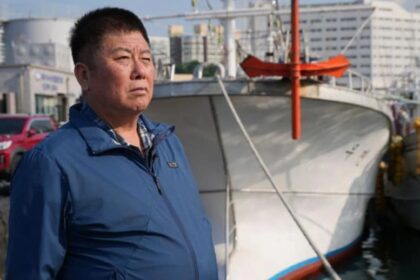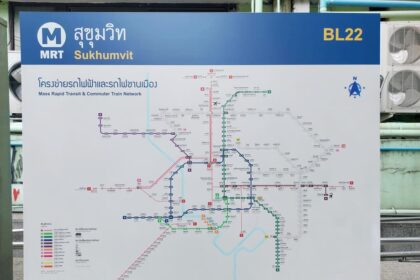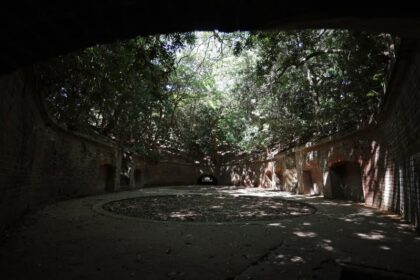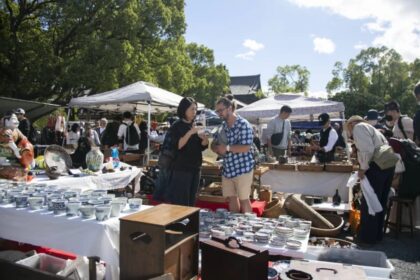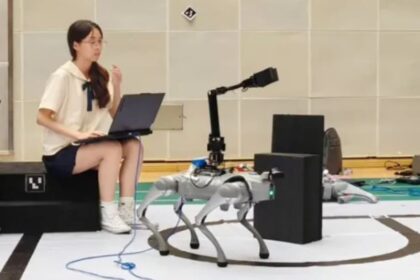A peaceful sanctuary steps from Shimokitazawa
A few minutes from the bustle of Shimokitazawa Station in Tokyo, down lanes lined with cafes and vintage shops, Setagaya Catholic Church offers a different pace. The small parish sits behind the Suzunari Theater in Kitazawa, where birdsong and rustling leaves often replace the city’s constant soundtrack. The sanctuary dates to 1948, built in the difficult years after World War II with help that included materials sent from France, according to reporting by the Mainichi. On the grounds today, visitors find a serene wooden nave with a barrel vaulted ceiling, a modest yard, and a Lourdes style grotto that invites quiet prayer.
- A peaceful sanctuary steps from Shimokitazawa
- How a wartime barrack and French aid shaped the chapel
- Inside the sanctuary, simple timber and a barrel vaulted ceiling
- The Lourdes grotto, a French devotion recreated in Tokyo
- Faith community, services, and access
- A stage for culture and charity in Setagaya
- Setagaya context and neighborhood life
- Visiting tips and etiquette
- What to Know
The parish is dedicated to St John the Baptist and serves Catholics who live and work in Setagaya, the largest of Tokyo’s special wards by population. Sunday Mass is celebrated in Japanese, and weekday times give commuters and families a chance to stop in. Many come to worship. Others come to pause in a quiet corner of the city where it is possible to sit, breathe, and let a busy day slow down.
How a wartime barrack and French aid shaped the chapel
The history of the parish begins in 1946 when Father Petro Takemi Konda gathered local Catholics for prayer in rented rooms at a private home, according to the Archdiocese of Tokyo. In 1947, a small chapel was moved from Fuchu cemetery to the current site and adapted for parish use. Around the same time, a surplus Nissen hut from the U.S. Army became the first chapel on the grounds. Parishioners called it a kamaboko barrack because its half round profile resembles the curved shape of kamaboko fish cake familiar in Japan.
From wartime shelter to community hall
The permanent sanctuary was consecrated in 1948. Mainichi reports that materials were shipped from France to help complete the building, a sign of support for a community rebuilding after the war. The Nissen hut served as the primary prayer space until the sanctuary opened. Priest Stanislaus Fusao Sekine, the current parish priest, has explained that the hut later became a venue for music, cultural gatherings, and charity events that serve neighbors as well as parishioners.
Inside the sanctuary, simple timber and a barrel vaulted ceiling
Entering the sanctuary, the first impression is calm. Warm wood tones draw the eye upward to a gentle, barrel vaulted ceiling. Above the altar, Greek letters refer to Jesus Christ as the Lamb of God, a detail visible in a photo series published by the Mainichi. Stained glass panels flank the altar and cast soft color over the pews. Icons and a simple cross frame the space without excess decoration. The effect is a room shaped for listening and prayer.
A barrel vault is a continuous arch that runs the length of a room. The form appears in many Romanesque buildings because it can span wide spaces while remaining strong and stable. In a compact urban parish like Setagaya, the vault adds breadth and a sense of shelter without the need for elaborate buttresses or heavy ornament. The result is an interior that feels both sturdy and gentle.
The Lourdes grotto, a French devotion recreated in Tokyo
On the north side of the grounds stands a small grotto that echoes Lourdes in southern France. Catholics trace the devotion to 1858, when a 14 year old, Bernadette Soubirous, reported a series of visions of the Virgin Mary at a cave on the edge of the town. Over time, many parishes around the world have raised their own grottoes. These quiet corners remind visitors of prayer, water, and healing associated with the original site at Lourdes.
Building a place to pause
Setagaya’s grotto was assembled from donated concrete scraps and other materials provided by parishioners, a practical and symbolic act of making something beautiful from fragments. A statue of Mary looks upward in the cave like niche, and the trees nearby soften city sounds. People pause there to light a candle, whisper a short prayer, or sit without speaking. The grotto is not grand. It feels handmade and close to the ground, which encourages unhurried reflection.
Priest Stanislaus Fusao Sekine, who shepherds the parish community, often describes what visitors find when they arrive without a plan. Speaking to a Mainichi reporter, he captured the mood that draws people to this small church even if they only meant to take a shortcut past the theater.
“The church is where people find peace while they stand quietly,” said Priest Sekine.
Faith community, services, and access
Setagaya Catholic Church is dedicated to St John the Baptist and is part of the Archdiocese of Tokyo. The Archdiocese lists Sunday Mass at 10:30 am in Japanese. Weekday Mass is available morning, afternoon, and evening. There is Sunday School once a month in a Room of Parents and Children. The building includes a sloped entrance and an accessible restroom to assist worshippers with mobility needs. The parish counted 641 registered members as of late 2019, a size that encourages people to know one another by name.
Faith formation and prayer are regular parts of the weekly rhythm. The parish hosts Bible classes, a reading group on the Catechism, and study sessions on early church writers as well as the Old Testament. At set times the community prays with Taize hymns and the Liturgy of the Hours, a pattern of psalms and readings that Christians use around the world to mark morning, evening, and night. The Archdiocese notes that people are welcome to join these prayers after work, which fits the neighborhood’s schedule.
A stage for culture and charity in Setagaya
The kamaboko hall, the former Nissen hut, has found a second life as a flexible room for events. Its simple half cylinder shape makes it easy to set up for small concerts, lectures, workshops, and exhibitions. Charity concerts noted by Mainichi have helped the parish support causes beyond its walls while giving neighbors an entry point into the community.
Art and healing
For the sixtieth anniversary of the sanctuary consecration in 2008, the parish organized a collaborative art project with the artist Minha Lee called The Wings of an Eagle. Over ten months, parishioners and neighbors created large panels using used tea bag paper, Korean paper, and simple drawing materials, then installed the work for Christmas Eve Mass. The project team described the process as a shared ritual that encouraged people to express hopes, work through tensions, and recover a sense of togetherness through making art. The church presented the exhibition through mid 2009 as a gift back to the community that helped build it.
Setagaya context and neighborhood life
Setagaya City sits in the southwestern part of Tokyo’s core area. It is the most populous of Tokyo’s special wards and includes districts that blend quiet residential streets with creative hubs. The Kitazawa area around Shimokitazawa Station is known for small theaters, live houses, and independent shops. Setagaya Catholic Church fits into this fabric as a small, green oasis. Its sanctuary exterior is covered by climbing plants in places, which softens the outline against neighboring homes and lanes.
Getting there
The parish is easy to reach by rail. The Odakyu Odawara Line and the Keio Inokashira Line both stop at Shimokitazawa Station. Ikenoue Station on the Keio Inokashira Line is also close. From either stop it is about a 5 minute walk to the church, which sits behind the Suzunari Theater on a quiet street. Good access and a compact site make it possible to stop by after shopping, before a show, or on the way home from work.
Visiting tips and etiquette
This is an active parish, not a museum. Visitors are welcome to look inside the sanctuary when it is open, light a candle at the grotto, or attend Mass. Quiet is expected, especially during services. Modest dress and respectful behavior are appreciated. Avoid blocking aisles and do not use flash or take photos during prayer.
Schedules can change at short notice. Check the parish calendar for Mass times, prayer gatherings, and any concerts or exhibitions in the hall. The parish posts updates and contact details on its official site. Those who wish to learn more about the church’s programs can also consult the Archdiocese of Tokyo directory for a broader view of parish life across the city.
What to Know
- Founded as a parish community in 1946 by Father Petro Takemi Konda, with early gatherings in rented rooms.
- The permanent sanctuary was consecrated in 1948 after the war, with materials sent from France helping the build.
- The church is dedicated to St John the Baptist and is part of the Catholic Archdiocese of Tokyo.
- A surplus Nissen hut, nicknamed the kamaboko barrack, served as the first chapel and now hosts community events and charity concerts.
- The sanctuary interior features a barrel vaulted ceiling, Greek letters above the altar referring to Jesus as the Lamb of God, and stained glass beside the altar.
- A Lourdes style grotto on the north side of the grounds was made from donated concrete scraps and provides a quiet place for prayer.
- Priest Stanislaus Fusao Sekine leads the parish and describes the church as a place where people find peace while they stand quietly.
- Programs include Sunday Mass in Japanese at 10:30 am, weekday Mass, Bible classes, reading groups, and prayer with Taize hymns and the Liturgy of the Hours.
- The parish had 641 registered members as of late 2019, which supports a close knit community feel.
- The church sits behind the Suzunari Theater near Shimokitazawa Station, about a 5 minute walk from Odakyu and Keio line platforms.


